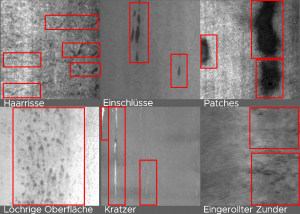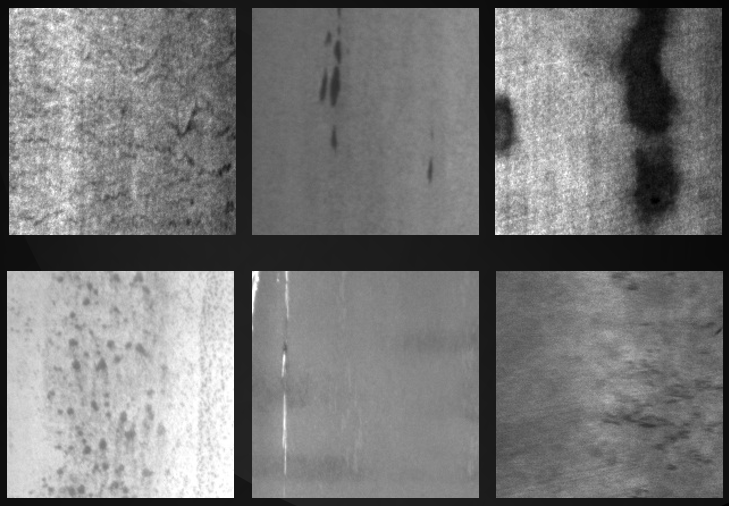The task
In large steel processing plants, continuous quality assurance of the rolled surface is essential. Our goal is the autonomous detection of defects such as hairline cracks, inclusions, patches, perforated surfaces, scratches and rolled scale directly during the production process – without manual intervention and with minimal delay.
The challenge
The defects are usually small, inhomogeneously distributed and embedded in a harsh production environment (dust, vibration, lighting fluctuations). In addition, the inspection solution must hardly disrupt the flow of production. A model must be extremely efficient, robust against interference and at the same time highly precise.
The solution
We develop an embedded AI model that runs directly on a System-on-Module (SoM) platform. The camera (or a sensor module) monitors the steel strip at a high frame rate (e.g. 60 frames per second), the model processes each image live and highlights detected defects in real time. It is important that the model is small, efficient and optimized for industrial use.
Key technical data
| Parameter |
Value |
| Model size |
approx. 2 MB |
| Complexity |
approx. 1.4 GOPs |
| Platform |
SoM / Embedded |
| Frames per second (Inference) |
60 FPS |
| Test accuracy |
98,3 % |
This combination of small model size and high accuracy enables stable, low-maintenance integration into existing production lines.

The added value
The solution enables precise and reliable defect detection in real time. Production lines can immediately identify, mark and, if desired, automatically reject defects. The small model size and low resource requirements mean that no additional computer infrastructure is required – the system runs directly on the machine. At the same time, the high accuracy of 98.3% reduces false alarms and significantly lowers maintenance costs. The result is a low-maintenance, scalable system that can be seamlessly integrated into existing rolling processes and raises quality assurance to a new level.

